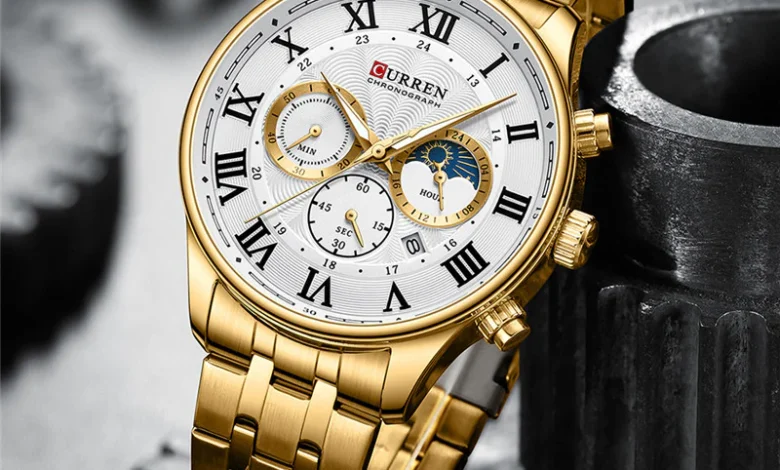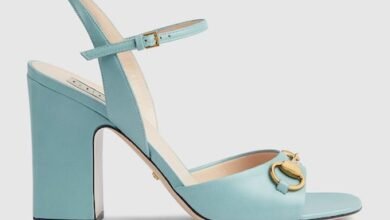Watch: A Timeless Accessory That Blends Style and Function

A watch is far more than just a time-telling device — it’s a fashion statement, a symbol of craftsmanship, and, in many cases, a piece of personal history. Whether it’s a sleek luxury timepiece, a rugged sports , or a high-tech smart, this small accessory can say a lot about the person wearing it.
Over the decades, wtches have evolved from purely practical tools into versatile lifestyle companions. Today, they’re as much about aesthetics and identity as they are about function. From traditional analog designs to advanced digital displays, the watch remains one of the most enduring and cherished accessories in both men’s and women’s wardrobes.
In this article, we’ll explore the rich history, different types, practical uses, fashion appeal, and cultural significance of — proving that this accessory is truly timeless.
The History of the Watch
The history of goes back centuries, beginning with clock-making in the 16th century. Early timepieces were large and often worn as pendants, more decorative than portable. It wasn’t until the late 17th century that smaller, more practical began to appear, thanks to advances in mechanical engineering.
By the 19th century, wristwatches became more popular, particularly among women. Men typically preferred pocket at the time. That changed during World War I, when soldiers found wristwatches far more practical in the field than fumbling with a pocket . This shift turned the wristwatch into a masculine accessory, and it quickly became a mainstream item for both men and women.
In the 20th century, the watch industry exploded with innovation. Mechanical gave way to quartz in the 1970s, revolutionizing accuracy and affordability. Then, in recent years, smartwatches brought digital convenience to the wrist, blending fitness tracking, notifications, and even mobile payments into a single wearable device.
Different Types of Watches

watch When it comes to choosing a watch, the variety is vast — each type serving a different purpose and aesthetic.
Analog are the most traditional type, featuring hour and minute hands and often a second hand. They range from minimalist designs to ornate, luxury pieces with intricate dials. Mechanical and automatic fall into this category, appealing to enthusiasts who value craftsmanship.
Digital display time using numerical digits rather than hands. Popular since the late 20th century, they’re valued for their precision, affordability, and often extra features like alarms, timers, and backlighting.
Smartwatches are the newest category, acting like mini smartphones on your wrist. They can track your heart rate, count your steps, deliver notifications, and even make calls. Brands like Apple, Samsung, and Garmin have taken this category to new heights, merging fashion with cutting-edge tech.
Other specialized include diver’s watches, pilot hes, and chronographs, each designed with specific functions in mind. The sheer variety means there’s a for every lifestyle and personality.
Watches as a Functional Tool
The most obvious function of a watch is to tell time, but modern go far beyond that. Many mechanical and quartz include additional features known as complications, such as date displays, moon phases, and multiple time zones. These features make them practical for frequent travelers, professionals, and outdoor adventurers alike.
Sports and activity-focused watches add even more functionality. Dive , for example, are water-resistant to extreme depths and feature rotating bezels for measuring underwater time. Pilot often have large, easily readable dials and sometimes even slide rule bezels for making calculations mid-flight.
In the age of smart technology, have evolved into full-fledged personal assistants. A smartwatch can guide you through workouts, help you navigate with GPS, remind you of appointments, and even monitor your sleep patterns. In many cases, it’s a device that replaces the need to constantly check your phone.
The Fashion Statement of a Watch
Beyond their practical use, watches have long been a key element of personal style. A luxury from brands like Rolex, Omega, or Patek Philippe is often seen as a status symbol, representing not only wealth but also taste and appreciation for fine craftsmanship.
In the fashion world, are versatile accessories. A sleek dress with a leather strap complements formal attire, while a chunky sports can add a rugged edge to casual outfits. Matching the style to the occasion is an art in itself.
Minimalist designs have also gained popularity, appealing to those who prefer understated elegance. Brands like Daniel Wellington and Skagen have made simple, clean dials fashionable, proving that a doesn’t need to be flashy to make an impact.
How to Choose the Right Watch
Choosing the perfect watch depends on your needs, lifestyle, and personal style. Start by considering function. Do you need a for sports, formal events, or everyday wear? A mechanical might appeal to a collector, while a smartwatch could be ideal for someone seeking fitness tracking and connectivity.
Size and comfort also matter. A that’s too large can look awkward, while one that’s too small might not make the statement you want. The strap material is another factor — leather for elegance, metal for durability, silicone for sportiness.
Finally, set a budget. Watches range from affordable under-$50 models to luxury timepieces costing hundreds of thousands. There’s something for every price point, so it’s about finding the balance between your budget and desired quality.
Caring for Your Watch
Proper care ensures your lasts for years, both in function and appearance. Mechanical require regular servicing — typically every 3–5 years — to keep their intricate movements running smoothly. Quartz watches usually only need battery replacements, though occasional servicing helps maintain performance.
For everyday maintenance, avoid exposing your to extreme temperatures or moisture unless it’s designed for such conditions. Keep leather straps away from water to prevent damage, and clean metal bracelets with a soft cloth to maintain shine.
Smartwatches benefit from regular software updates and careful charging habits to extend battery life. Whether traditional or modern, storing your in a safe, dry place when not in use is key to preserving it.
The Cultural and Emotional Value of Watches
Watches often hold more than just monetary value — they can be deeply personal. Many people receive as gifts for significant life events like graduations, weddings, or retirements. These timepieces become cherished keepsakes, often passed down through generations.
In some cultures, carry symbolic meaning. In Japan, for example, giving a as a gift can signify respect and the hope for a long, prosperous life. In Western culture, luxury often mark professional success or personal milestones.
For collectors, each represents a piece of history, whether it’s a vintage mechanical model or a limited-edition release. The emotional connection to a watch can make it far more valuable than its retail price.
Final Thoughts
From ancient mechanical marvels to modern smart companions, the has remained a steadfast part of human culture. It blends function, style, and personal expression in a way few other accessories can. Whether you wear one to keep track of time, enhance your outfit, or connect to the digital world, a is a statement that never goes out of style.
The best part? are endlessly adaptable. Trends may shift, but the appeal of wearing time on your wrist remains timeless. Whether you’re a collector, a tech enthusiast, or someone who just likes to accessorize, there’s a out there waiting to become a part of your daily life — and maybe even your legacy.



